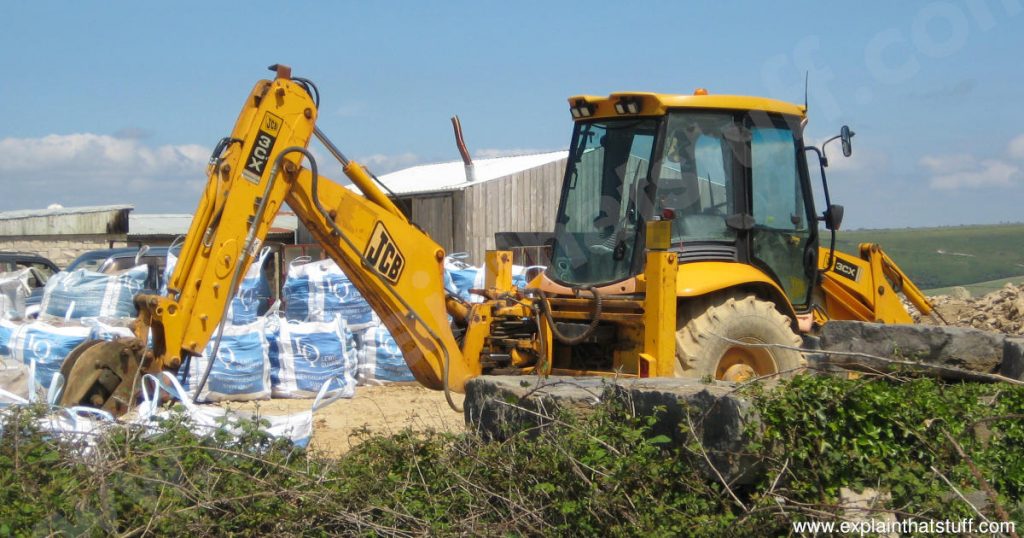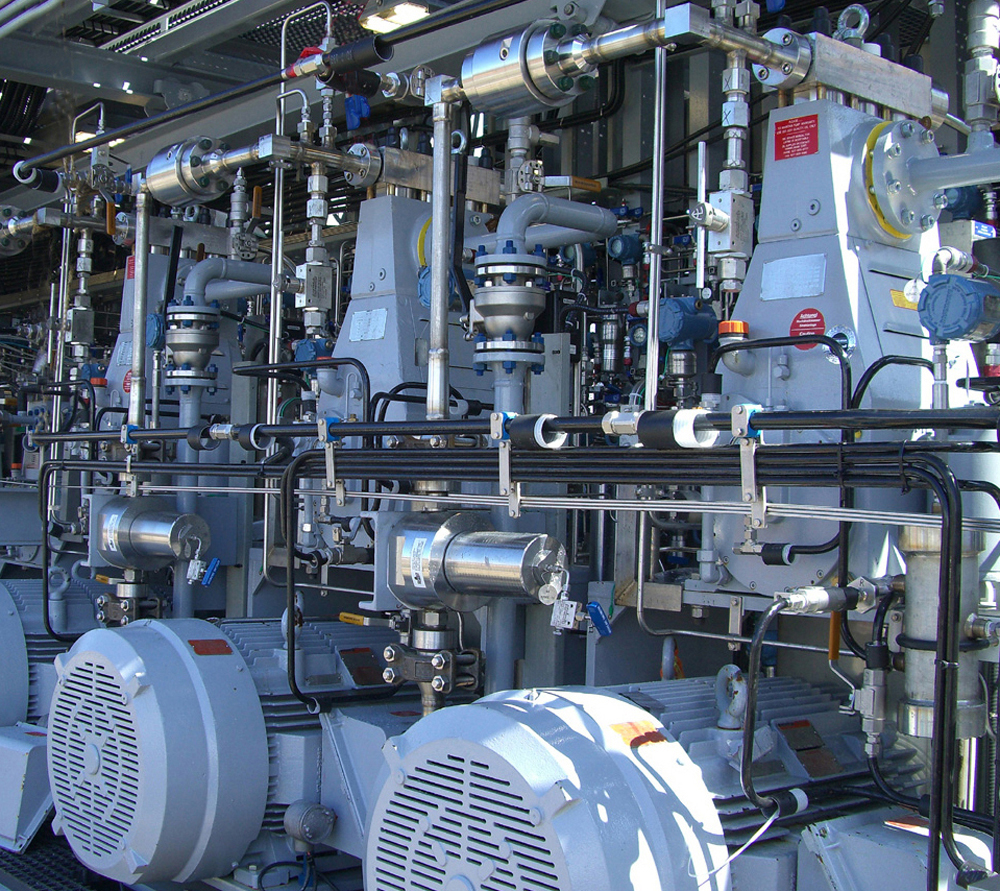The article is written by Riya Veluri, an editorial team member of Industrial Lubricants. After her graduation, Riya works as a website developer & SEO specialist in Lubrication & Tribology Industry & writes technical articles on Lubricants, Lubrication, Reliability & sustainability.
Everything You Should Know About Hydraulic Fluids Before Selection
Table of Contents
Hydraulic fluids are used for power transmission in hydraulic machinery. Hydraulic machines use fluid’s ability to perform work. So, here is some example of equipment where usually hydraulic fluids are used like excavators and backhoe Loaders, hydraulic brakes, power steering systems, automatic transmissions, garbage trucks, aircraft flight control systems, lifts, and industrial machinery.
Hydraulic fluids consist of 99% base stock and about 1% of additives. The most common base stock for modern hydraulic fluids is mineral oil, Group 1 base oil. However, other base stock types may be required for particular purposes, e.g. propylene glycol or silicone oils. Additives are added to give hydraulic fluids unique properties. Typical additives include corrosion inhibitors, anti-erosion additives, friction reducers, and anti-foaming.

Figure 1. All movement and functions of a hydraulic excavator are accomplished through the use of hydraulic fluid, with hydraulic cylinders and hydraulic motors. Source: www.explainthatstuff.com
Types of Hydraulic Fluids
Petroleum-based fluids: Petroleum-based oils,also called mineral oils, are the most widely used fluids in hydraulic systems. They are readily available and economically viable. The only major disadvantage of petroleum-based oils is flammability. At higher temperatures, petroleum oils may evaporate or catch fire. In short, it may cause fire hazards in high-temperature environments, e.g. steel industries, coal mining, hot metal processing equipment and aircraft & marine fluid power systems.
Synthetic fluids: Phosphate ester-based synthetic fluids are another very popular hydraulic fluid. They are fire-resistant and hence suitable for high temperature applications as it has a high viscosity index and outstanding lubrication properties. However, they are uncompatible with some sealing materials like nitrile and require from mor inert and expensive sealing materials, e.g. fluoroelastomers. Additionally, phosphate ester is not environment-friendly and it often reacts with aluminium and paints.
Vegetable Oils: Vegetable oils are complete environment friendly & biodegradable. In addition, they have suitable lubrication properties with moderate viscosity. Generally, vegetable oils are not good fire-resistant fluid but they can become when mixed with certain additives. Vegetable oils tend to oxidate and easily absorb moisture.
Water Glycol: These are popular non-flammable hydraulic fluids used in the aircraft’s hydraulic systems. They have a water-glycol ratio of 1:1. However, enough care is required to use these fluids as they are toxic and corrosive towards certain metals such as zinc, magnesium & aluminium. They are ideal for low-temperature applications as they exibit high antifreeze characteristics.
Emulsions: Emulsions are a mixture of two fluids that do not reacts with each other. Emulsions are generally made of by mixing petroleum-based oils and water. In addition, an emulsifier is usually added to the emulsions to keep the disperse phase as tiny droplets supended in the continuous phase. Two types of emulsions can be distinguished:
- Oil in water (5:95 ratios) emulsions: These emulsions have water as the primary phase and small droplets of oil are dispersed in it. As it has 5% of oil and 95% of water, thus it exhibits characteristics of water. Oil in water (5:95 ratios) emulsions have many limitations such as poor viscosity leading to leakage problems, loss in volumetric efficiency and low lubricity, these problems can be overcome by using certain additives. Such emulsions are used in high displacement & low-speed pumps such as mining applications.
- Water in oil (40:60 ratios) emulsions: These types of emulsions are also called inverse emulsions. These emulsions have oil as the primary phase and small droplets of water are dispersed in it. They are the most popular fire-resistant hydraulic fluids. Water in oil (40:60 ratios) emulsions exhibit more oil-like characteristics. Hence they have suitable lubrication properties and good viscosity.
Hydraulic Fluid Viscosity
Viscosity is crucial when selecting hydraulic oil. Viscosity is defined as a fluid’s resistance to flow at a given temperature, and all fluids are usually measured at the same temperature to determine their viscosity. Lower viscosity fluids will flow more easily and faster, while high viscosity fluids will flow more slowly. Thus a high viscosity fluid has more resistance to flow than a low viscosity one. The ideal viscosity range for fluid and thus its highest efficiency depends on each application. The kinematic viscosity of a hydralic oil is usually between 10 and 100 mm²/sec.

Figure 2. Offshore hydraulic oil processing unit.
Properties of Hydraulic Fluids
A hydraulic system works by moving the working fluid through the components. A hydraulic fluid also helps to dissipate the heat from components, thus the hydraulic fluid acts as a cooling fluid. The selection of a hydraulic fluid depends on the requirements of the power system.
Let’s discuss some of the hydraulic fluid properties.
Good Lubricity:
First of all, the hydraulic fluid must have good lubricity. This is because if the surfaces of various components come in contact, it may cause wear and damage to the system. A hydraulic fluid with good lubricity effectively separates and lubricates the components.
As the hydraulic system operates, the system’s temperature rises, affecting the hydraulic fluid’s viscosity. On increasing the temperature, the viscosity of the liquid decreases and vice versa. This change in viscosity due to temperature is measured by the viscosity index of the fluid. A hydraulic fluid with a low viscosity index will significantly change its viscosity with temperature change. On the other hand, a fluid with high viscosity index (VI) will have a slight or low change in viscosity.
Chemical & Physical Stability:
In a hydraulic system, the fluid is subjected to various conditions like pressure, temperature, turbulence and contamination of particulates, thus a hydraulic fluid should be chemically and physically stable to gaurantee its efficiency over extended periods.
Compatibility:
Moreover, the compatibility of the hydraulic fluid with the system is a must. Otherwise, the hydraulic fluid may react and damage the parts in contact, thus losing its functional efficiency.
High bulk modulus:
As we know that most liquids like oil or water are considered incompressible. Although in practice, all materials are compressible to a certain extent. The bulk modulus of a liquid is the measure of compression with an increase in pressure. A material with high bulk modulus will undergo lesser compression than a material with a low bulk modulus. Therefore the hydraulic fluid must have high bulk modulus for proper working.
Fire Resistance:
Another property desired in a hydraulic fluid is fire resistance. Since most of the hydraulic oils used are petroleum derivatives, care should be taken while operating them. Otherwise, the fluid might ignite at high temperatures. To overcome this, synthetic hydraulic fluids having high fire resistance are used.
Anti-Foaming characteristic:
Foam might be generated when mixing liquids and gases. This is because liquids can absorb nearby gases and forming foam. If the hydraulic fluid tends to form foam, it can cause hydraulic fluid leakage and damage the system. Thus hydraulic fluids shwoing a low foaming tendency are preferred in hydraulic systems.
Apart from all the properties we have seen, hydraulic fluids should also prevent rust formation in the system and dissipate heat effectively. No hydraulic fluid can possess all the properties. Hence the hydraulic fluid is used is the one fullfilling the most of the system requirements.
How to Select the Correct Hydraulic Fluid
Choosing the right hydraulic oil can be simple if you have the key pieces of information:
First, if your equipment is stationary, you’ll be looking to select one of the anti-wear (AW) hydraulic oils. These oils are non-foaming anti-wear hydraulic fluids that provide excellent protection from wear, rust and oxidation (R&O). When choosing which AW hydraulic oil is suitable for your stationary equipment, it is essential to follow the OEM or original equipment manufacturers recommendation for viscosity. Viscosity grades for hydraulic fluids are determined using the ISO viscosity grading scale. The most popular ISO viscosity grades are ISO VG 32 and ISO VG 46. ISO VG 32 is sometimes referred to as 10 weight hydraulic oil, while ISO VG 46 is 15 weight.
Conclusions
We have discussed everything you should know before selecting any hydraulic oil and its viscosity. We usually choose low viscosity in high-speed machines & high viscosity in low-speed machines. Viscosity plays a vital role in the lubrication of machine parts so, to avoid any premature breakdown of the machine, one should choose the right lubricant and follow adequate maintenance procedures.
Leave a Reply
You must be logged in to post a comment.


What about the type of oil for hydraulic lifts?